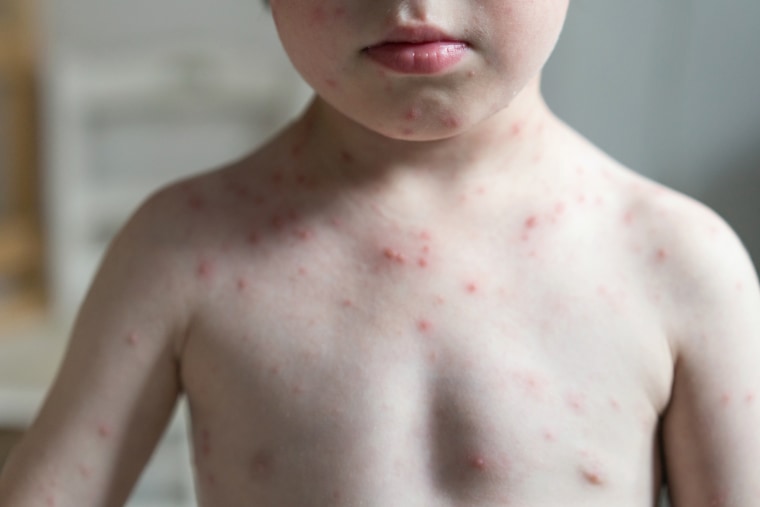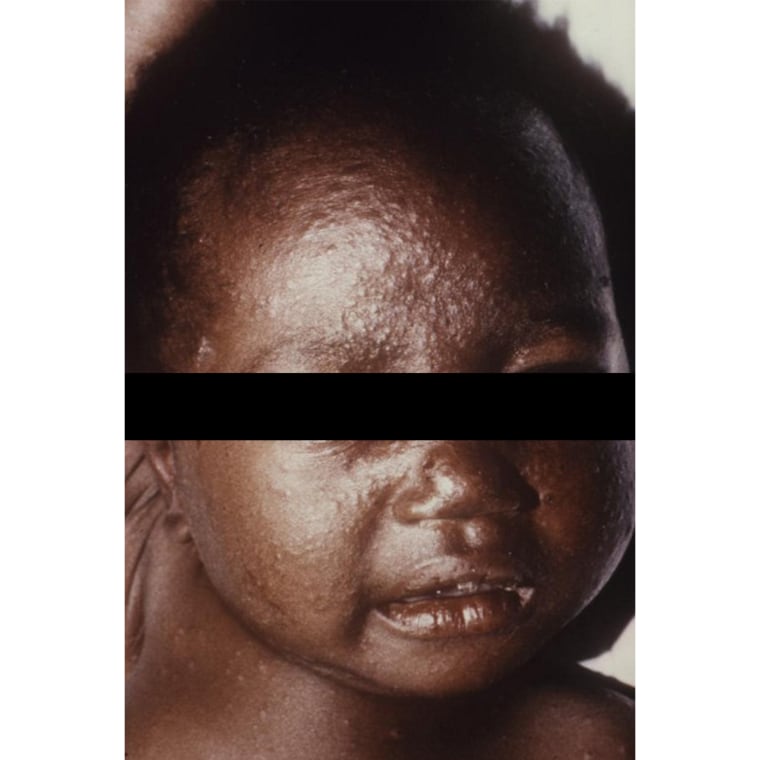Chicken pox, also called varicella, is a highly contagious disease that mainly strikes children. In the early stages of chicken pox, you’ll see fever, fatigue, loss of appetite and headache. A day or two later the disease causes an itchy rash with blisters.
If you ask most adults if they’ve had chicken pox, they’ll share a story about how the disease spread through their elementary school classroom and their family. They may remember missing a week or more of school, staying home and struggling not to scratch their itchy blisters.
Dr. Melissa Piliang, a dermatologist at the Cleveland Clinic and a member of the American Academy of Dermatology, recalled how chicken pox hit her school before the winter holidays, and only three of 18 students in her third-grade class were onstage for a performance.
According to the Centers for Disease Control (CDC), about 4 million people used to get chicken pox every year in the United States. Of those, more than 10,000 needed hospitalization, and 100 to 150 died. With a chicken pox vaccine licensed in 1995, chicken pox has become much less common.
Dr. Jenny Murase, associate clinical professor of dermatology at the University of California, San Francisco, and a member of the American Academy of Dermatology, said she’s seen a few cases of chicken pox over the years: “It’s really unusual now to see it because people are vaccinated.”
Symptoms of chicken pox
What are symptoms of chicken pox and what does chicken pox look like? The rash from chicken pox is what separates it from most other diseases. “The blisters look like dew drops scattered on skin. They are in a lot of different phases. Some are just coming on, others are more fully formed and others are crusted and drying up,” Murase said.
The rash can cause 250 to 500 itchy blisters that start on the chest, back and face before spreading to the rest of the body, according to the CDC.
Chicken pox in adults is serious — the older you are the more serious it can be, according to the American Osteopathic College of Dermatology (AOCD). It’s also dangerous for babies, adolescents, pregnant women and immunocompromised people, the CDC says.
Causes of chicken pox
The varicella-zoster virus (VZV) causes chicken pox. It’s spread through close contact with a person who has chicken pox and appears 10 to 21 days after exposure. The disease is contagious from a day or two before the rash appears until the blisters have all scabbed over.
The virus that causes chicken pox also causes shingles, a disease that causes fever, headache, chills and a painful rash, usually in older adults — the pain from shingles can last for months or years, even after the rash is gone. People who have shingles can also spread chicken pox to others.
“People develop shingles all the time, so there’s still potential for exposure,” Murase said.
A vaccine is available to protect older people from developing shingles.

Diagnosing chicken pox
Your doctor can diagnose chicken pox based on your symptoms and the appearance of your rash. A swab from the blisters can be tested to confirm the diagnosis so treatment can get started right away.
Treatment for chicken pox
The best treatment for chicken pox is prevention. Children should have two doses of the vaccination for chicken pox, one when they are 12 to 15 months old and a second when they are 4 to 6 years old, according to the CDC.
It’s uncommon but possible for vaccinated people to get chicken pox. “Some people mount a better immune response, and some lose immunity over time,” Piliang said. Cases of chicken pox in people who have been vaccinated are usually mild.

Because chicken pox used to be so widespread, many people don’t believe it’s serious. But it can be life-threatening.
If it’s diagnosed early, you can treat chicken pox with antiviral medications, Piliang said. And you can alleviate the chicken pox symptoms with calamine lotion, cool baths with baking soda or oatmeal, and acetaminophen.
Try to prevent scratching, since it can lead to skin infections and make it more likely that the disease could spread to others — it can also result in scarring.


